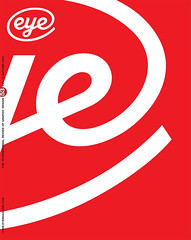Autumn 2004
El Lissitzky's divine parable
Had Gadya: The Only Kid
El Lissitzky, Getty Research Institute, £18.95, USD24.95<br>Had Gadya is the song that is sung at the end of an intimate family meal – a Seder – celebrating the Jewish festival of Passover, which commemorates the Israelites’ Exodus from Egypt. This special meal evokes the theme of freedom, comprising a recital, symbolic foods and ritual. The title translates as ‘Only One Kid’ – it is a kind of nursery rhyme similar in style to The House that Jack Built. It speaks of our ultimate reliance on reward and punishment and is thought to be a parable for the divine deliverance of the Jewish people through the ages. All the different characters mentioned in the song represent the many nations that have attempted to destroy or oppress the Jewish people over the centuries. As such, Had Gadya became a declaration of hope uttered throughout the ages to a nation immersed in near despair of their very existence.
El Lissitzky (1890-1941), who produced his version of Had Gadya in February 1919, was brought up within the Pale settlement, a region annexed from Poland and Turkey. A primary concern of the Czarist state in creating this area was to keep Jews from conducting commerce in Russia proper. Thus he would have been shaped by a powerful solidarity within his Jewish community: that they can never be true Russians. However, after the revolution of February 1917 the new Provisional Government abolished laws that barred Jews from citizenship and also abolished the Law prohibiting the printing of Hebrew letters. El Lissitzky may have viewed the song both as a message of Jewish liberation based on the Exodus story and also as an allegorical expression of freedom for the Russian people.
It is also one of the last works he signed under his Hebrew name, Eliezer. He chose to write it mostly in Yiddish – the bastardised German dialect of Ashkenazi Jews – perhaps as a means to persuade the Jewish public to join the Communist cause. There is a quasi religious-political message, declaring both his acknowledged roots in Judaism and his attraction to the new and better world promised by the Bolsheviks. The work also reflects his participation as a young artist in the Jewish cultural revival that took place in Russia during the 1910s. It links an old style with the new, moving away from Jewish folk culture towards abstract art. The three-panelled dust jacket wraps around the entire book and its design suggests that he may have been familiar with the Supremacist work of Malevich and Alexandra Exter. The illustrations, with their colourful flatness and expressive distortions of proportions, also consist of fractured planes and triangles in ochre, black and violet. The song experiments with language, typography and architectural form that would later define his future avant-garde style. The lithographs reveal several engaging and novel approaches to typography and design – an early example of El Lissitzky’s integration of letters and images. The mixture of decorative Hebrew letters and flat circular and triangular planes of colour demonstrates his concern with design. For each verse, he arranged the words of the story to form a curved rainbow frame around the illustration to connect text and image. While the lithographs are reminiscent of Chagall (with whom he had studied), the illustrations are more Cubist with their geometric forms and Futurist in their use of the spiral to evoke motion.
The book is really two books: a facsimile of El Lissitzky’s 1919 edition, including dust jacket and lithographs, firmly fixed to the back of a new volume about the work. This front section, starkly different from the back, includes an introduction, a translation and a detailed and informative iconography. There is also a music score – actually a bit useless, since Had Gadya is a rather tuneless tongue-twister.
However it is frustrating not being able to hold the complete object in one’s hands. I kept opening it at the back, hoping to separate it from the rest. The excellent educational part could been kept separate, thus not distracting us from seeing it for what it was.
Barbara Greisman, book artist, London
First published in Eye no. 53 vol. 14, 2004
Eye is the world’s most beautiful and collectable graphic design journal, published quarterly for professional designers, students and anyone interested in critical, informed writing about graphic design and visual culture. It is available from all good design bookshops and online at the Eye shop, where you can buy subscriptions, back issues and single copies of the latest issue. You can also browse visual samples of recent issues at Eye before You Buy.

